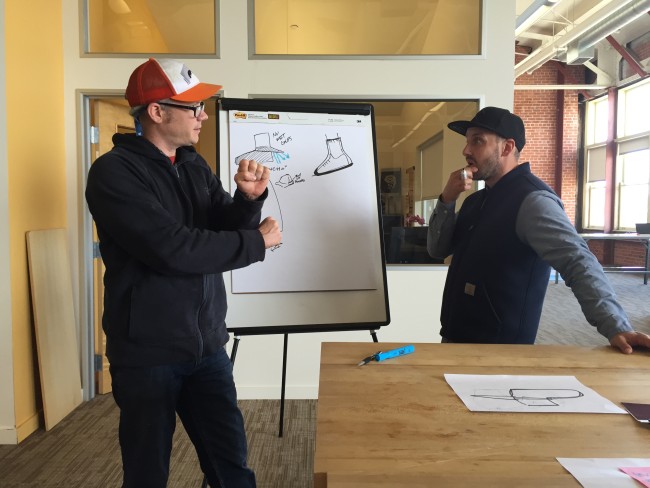
Last week, I had the opportunity to join a small group of media for a behind the scenes look at how Mountain Hardwear approaches product design. After a brief sneak peek at what the Spring ’16 line will include for the company (more on that this summer but it involves gear inspired by Ueli’s next crazy adventure, plus Progressive Trail, Active Camp, and Equipment categories), we spent the day working in small teams consisting of sponsored athletes, product designers, and media to play fantasy gear design, if you will.
The complex process of product design might be something we all intuitively understand from a 10,000 foot level, but often as consumers or even journalists we don’t appreciate all the minute details that need to be considered when designing new gear and the constraints involved. As Robert Fry, Head of Product Design, puts it, “consumers are lead to believe that products are made from magic and pixie dust.”
Our first exercise was to design a “face melting” product from scratch based on a product brief, including everything from packs and rainwear to tent and rain accessories. I was in the pack group, where we were tasked with creating an all purpose hydration compatible, lightweight pack for day hiking, biking, and trail running. Basically one pack that would make everyone happy. No easy task. We brainstormed crazy new approaches to ventilation, hydration, form, reflectivity, and storage.

All teams then had the opportunity to present their design to the group. Some of my favorites were the floating tent platform for the Optic 2.5 and the “Shoe-Brella” camo gaiter for keeping your feet dry. As a team, we then had to take the design of another team and improve upon it. Again, not as easy as you might think without completely changing the intended design itself.
Coming from a product development background myself, I would argue it’s a combination of this pie in the sky type brainstorming and the more constrained designs that produce great leaps forward. On one hand you have Ueli Steck and other athletes pushing the limits of what they want their gear to do, but on the other hand, constraints often lead to major innovations as you have to approach the problem differently in order to make the weight, price point, environmental, or even time to market limitations.
Either way, it’s nice to have this design perspective lurking in the back of your mind when you evaluate products in the field.


